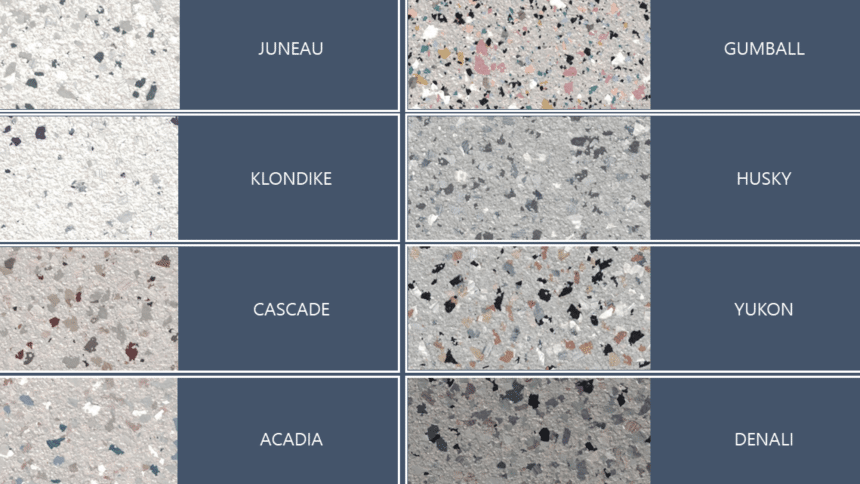Have you ever stood in a room with plain concrete floors and wished for something better? Choosing the right epoxy floor color can change how a space feels and works. Many homeowners get stuck when picking colors from charts full of options.
What if you could find a floor color that fits your exact needs? Epoxy floors come in many shades – from soft neutrals to bold statement colors. The right pick can make rooms look bigger, hide dirt, or match your style.
This guide will help you understand epoxy floor color charts and choose the best shade for your home. We’ll show you how to match colors with room use, lighting, and existing decor.
Keep reading to learn how to select the perfect epoxy floor color.
Why Epoxy Flooring is the Ideal Choice for Your Space
Epoxy flooring combines resin and hardener to create a solid coating that bonds to concrete. This forms a tough, smooth surface that holds up well over time.
What Makes Epoxy Floors Worth It:
Epoxy floors last 5-10 years with minimal care. They resist damage from heavy items, foot traffic, and vehicles. Cleaning needs just a broom and mop—spills wipe away easily without staining.
Perfect Spots for Epoxy Floors:
- Garages benefit most as epoxy blocks car fluids, tool marks, and salt damage. The bright finish makes the space more useful.
- Basements stay drier with epoxy, which seals out moisture and stops musty smells.
- Kitchens and bathrooms clean up fast after spills, and non-slip options add safety.
- Stores, factories, and offices use epoxy to handle foot traffic while keeping a clean look.
Factors to Consider When Choosing an Epoxy Floor Color
- Floor size matters – Lighter colors make small rooms feel bigger, while darker shades can make large areas feel more cozy and defined.
- Light plays a role – Check how the color looks under both natural daylight and artificial lighting since colors can look different based on the light source.
- Match your purpose – Select colors based on the room’s use; neutral tones work well in living spaces while bright colors might suit children’s areas.
- Hide or show dirt – Medium tones and patterns tend to mask dirt and marks better than very light or very dark solid colors.
- Think about cleaning – Some colors may show stains, dust, and footprints more easily, affecting how often you’ll need to clean the floor.
- Check with your style – Pick colors that go well with your existing walls, furniture, and overall room design for a put-together look.
- Consider future changes – Since epoxy floors last many years, choose colors that will still look good if you change your furniture or wall colors.
Top 8 Epoxy Floor Color Choices
When picking a color for your epoxy floor, these top seven choices offer options for any taste and need. Each color brings its own feel to a room and works well in different settings.
I’ll create content for each of these epoxy floor color blends with a one-line description, 2 bullet points, and a pro tip for each.
1. Juneau
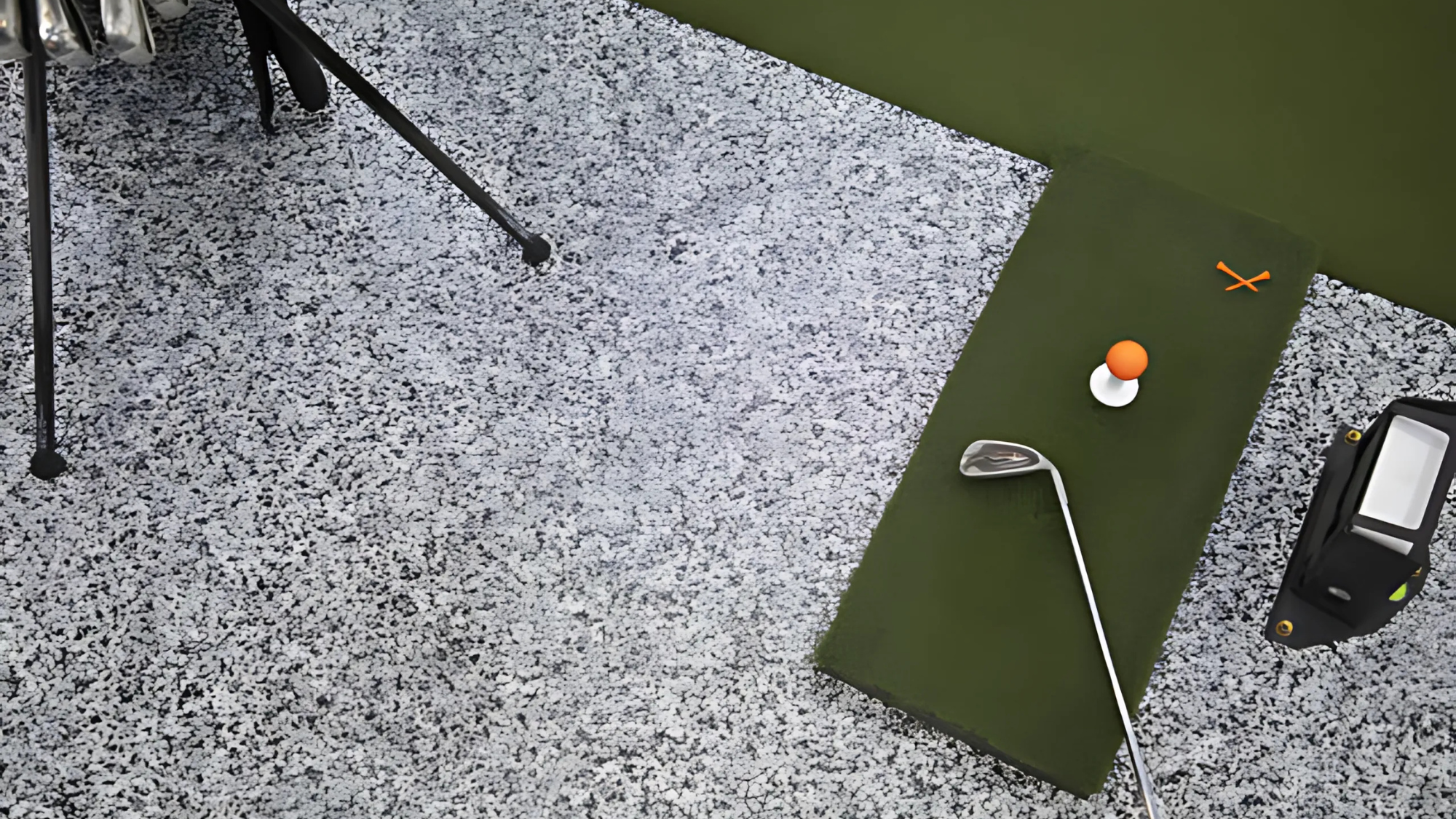
This cool, light gray blend with subtle specks creates a clean and modern look perfect for various settings.
- The light tone helps make smaller spaces feel open and bigger.
- Its neutral base works well with both warm and cool color furniture and decor.
Pro Tip: Add a clear top coat with a matte finish to this color for a softer look that hides dust between cleanings.
2. Klondike
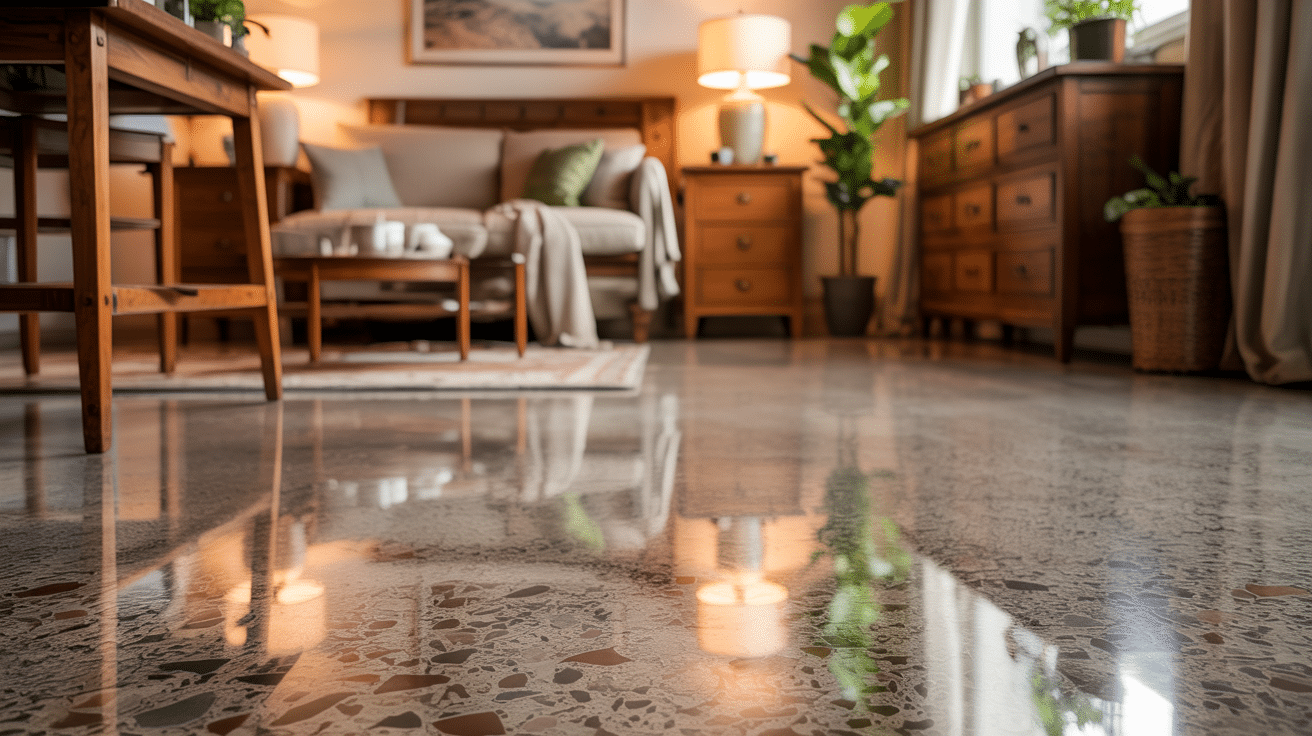
This mix of earthy tones with brown and gray hints brings a touch of nature indoors with a polished finish.
- The multi-toned flecks help hide dirt and small scratches from daily use.
- Works as a middle ground between too plain and too busy floor patterns.
Pro Tip: Pair Klondike with wood cabinets or furniture for a matched, well-thought-out room design.
3. Cascade
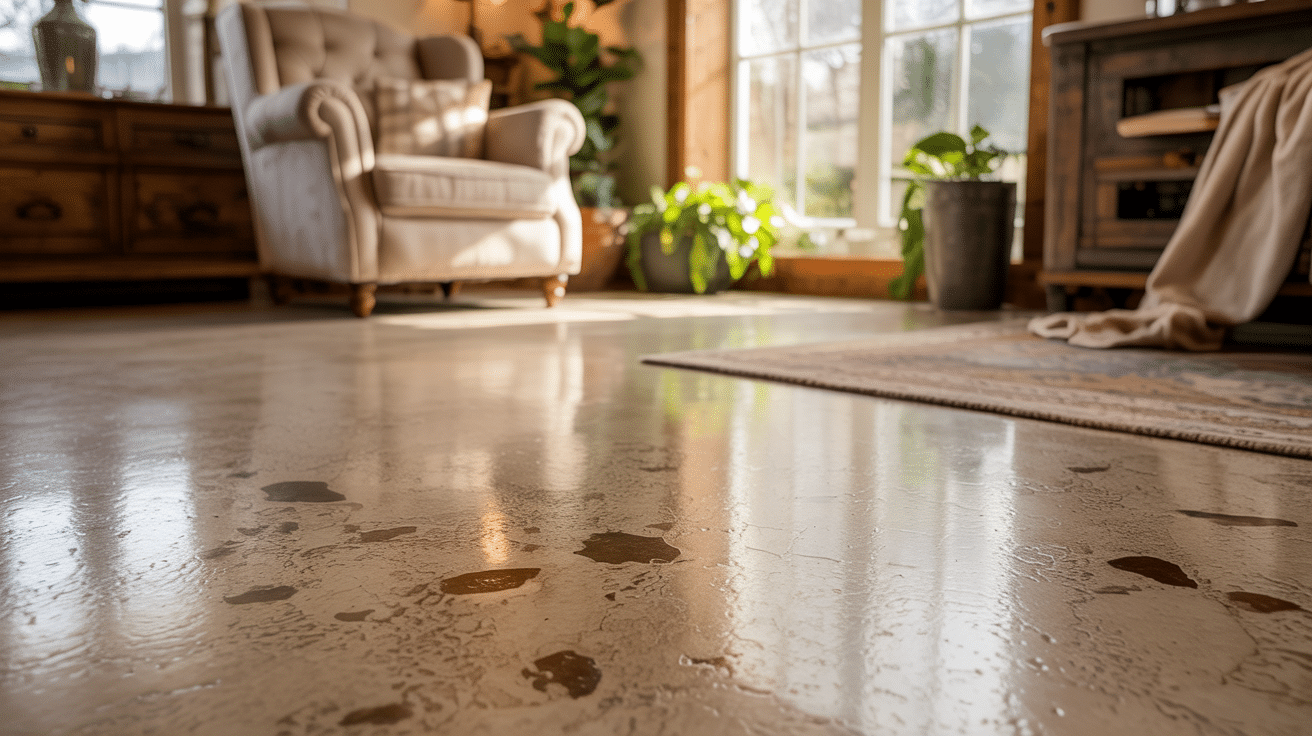
This beige and tan blend with brown flecks gives the look of stone without the high cost or cold feel.
- The warm tones make rooms feel cozy and lived-in from day one.
- The natural look fits with many styles from country to modern farmhouse.
Pro Tip: Use Cascade in rooms that flow into outdoor spaces to create a smooth visual link between inside and outside.
4. Acadia
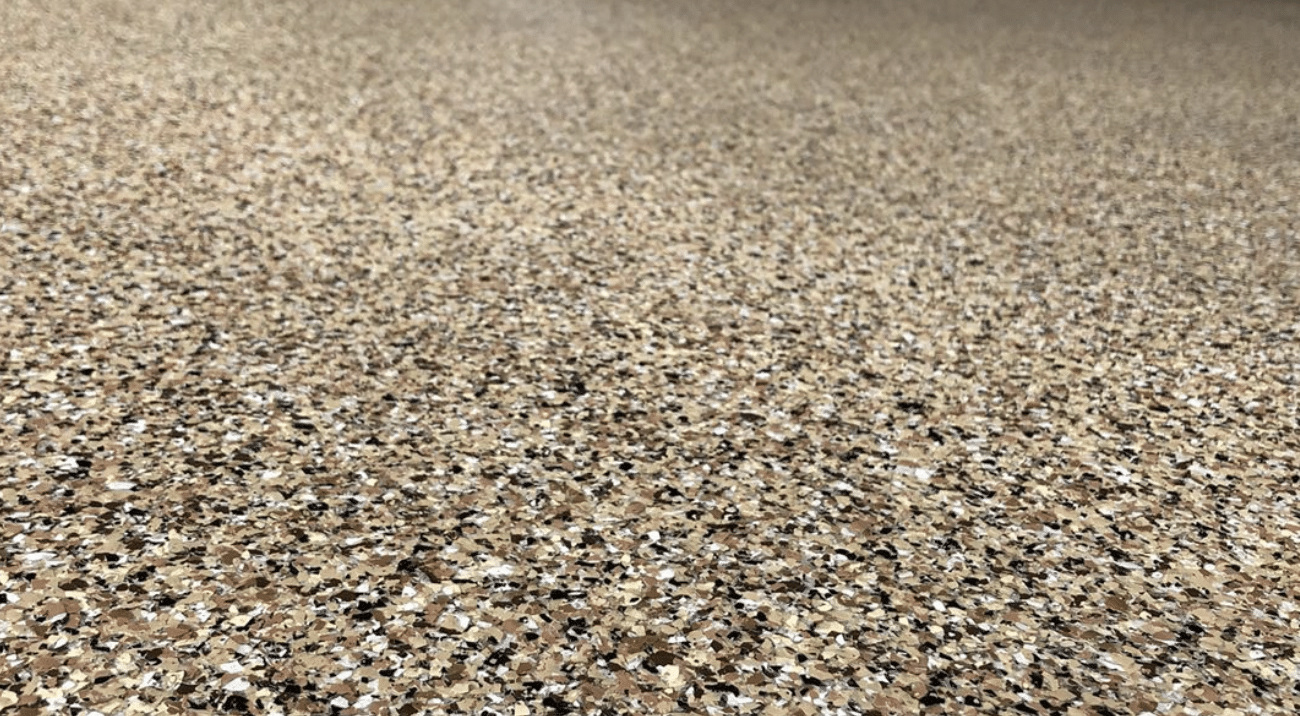
This rich blend of browns, reds, and blacks adds depth and class to any room it graces.
- The dark tones hide marks well, making it good for busy homes.
- Its mix of colors allows it to match with many wood tones and metal finishes.
Pro Tip: In large rooms, Acadia helps the space feel more cozy and less empty, making it great for open floor plans.
5. Gumball
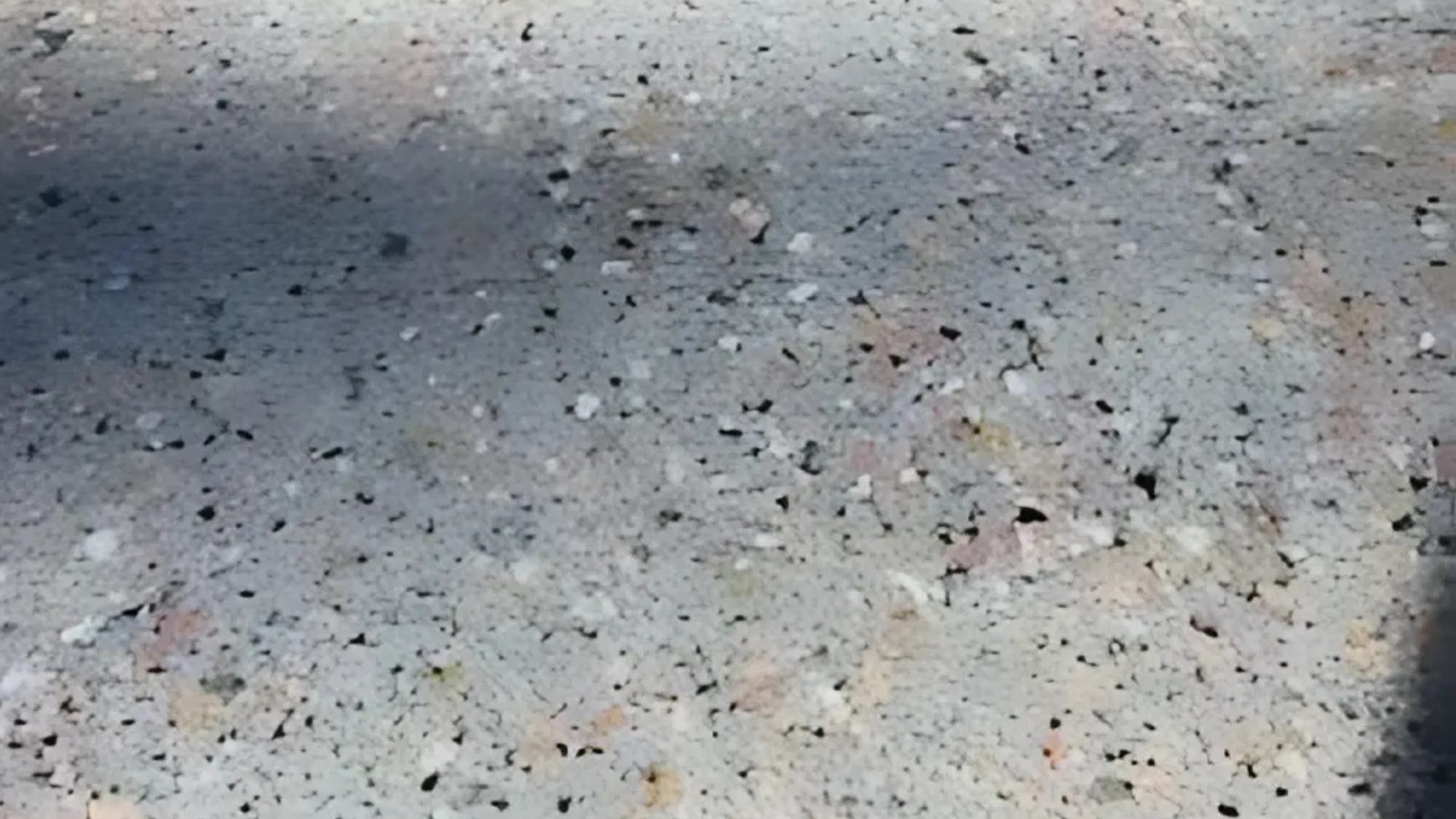
This fun mix of bright colors brings joy and life to spaces that need a boost of energy.
- The varied colors hide stains well, making cleanup less stressful.
- It stands out as a unique floor choice that guests will notice and comment on.
Pro Tip: Balance the busy floor by keeping walls and furniture in solid, simple colors to avoid visual overload.
6. Husky
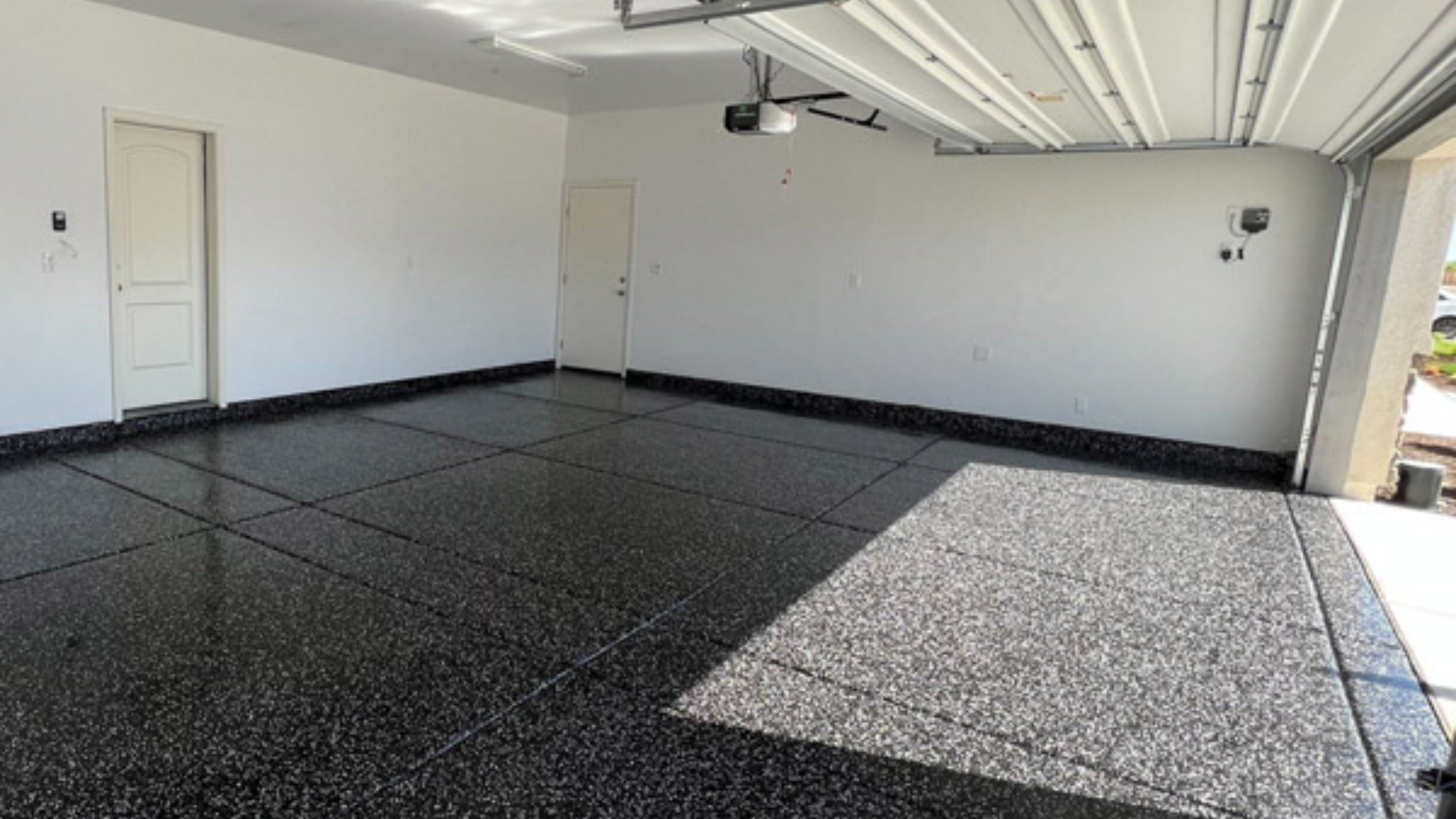
This blend of grays and blacks offers a sleek look that fits well in modern spaces.
- The dark tones create a solid base that lets your furniture stand out.
- Its urban feel works well with metal, glass, and other sleek materials.
Pro Tip: Add a high-gloss finish to Husky for a wet-look floor that adds depth and makes spaces look larger.
7. Yukon
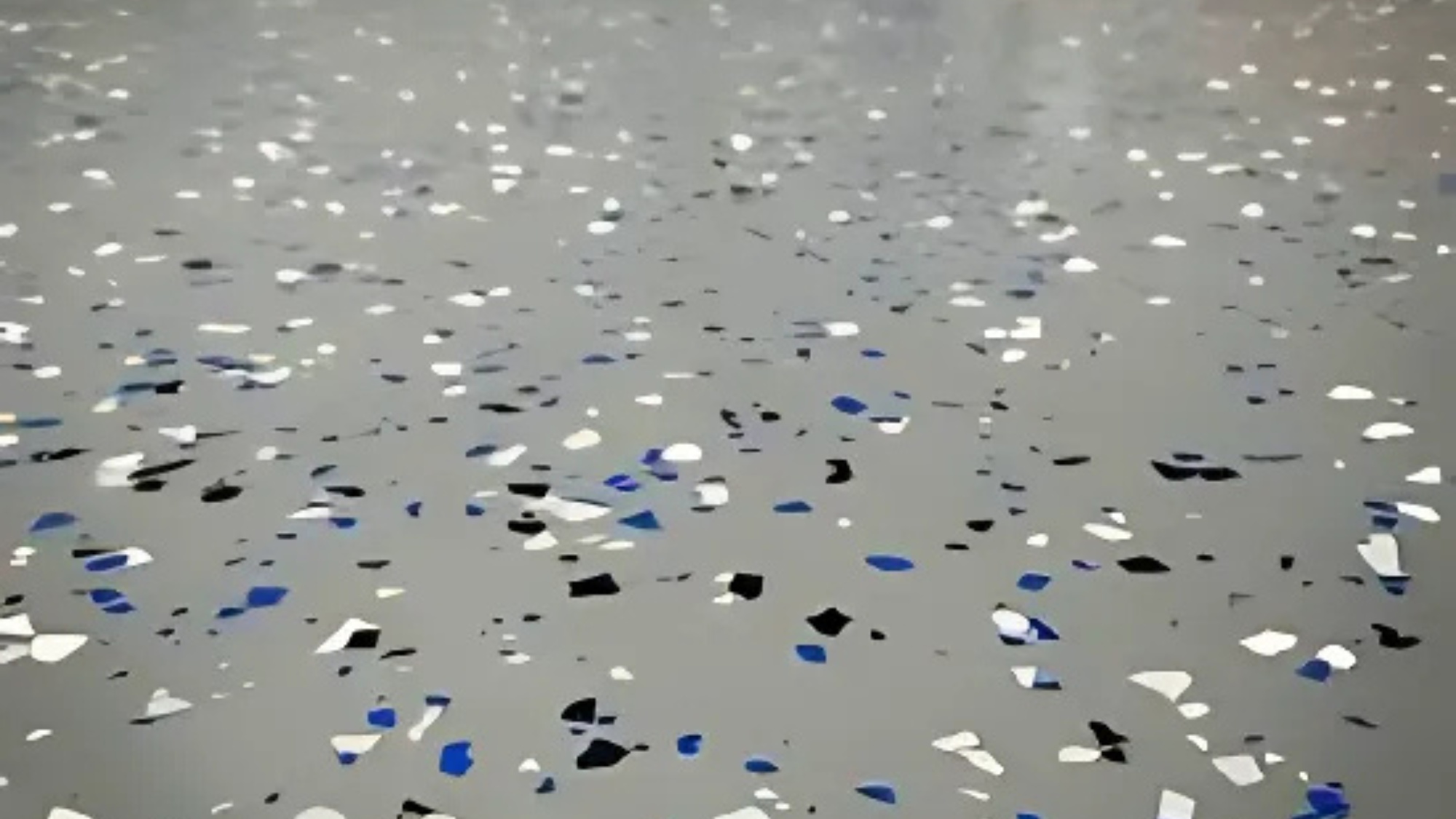
This frosty mix of whites and light blues brings a breath of fresh air to any room.
- The cool tones help hot rooms feel more comfy in warm weather.
- Its light color makes rooms with little natural light feel brighter.
Pro Tip: Use Yukon in bathrooms with blue accents for a spa-like feel that looks clean and fresh.
8. Denali
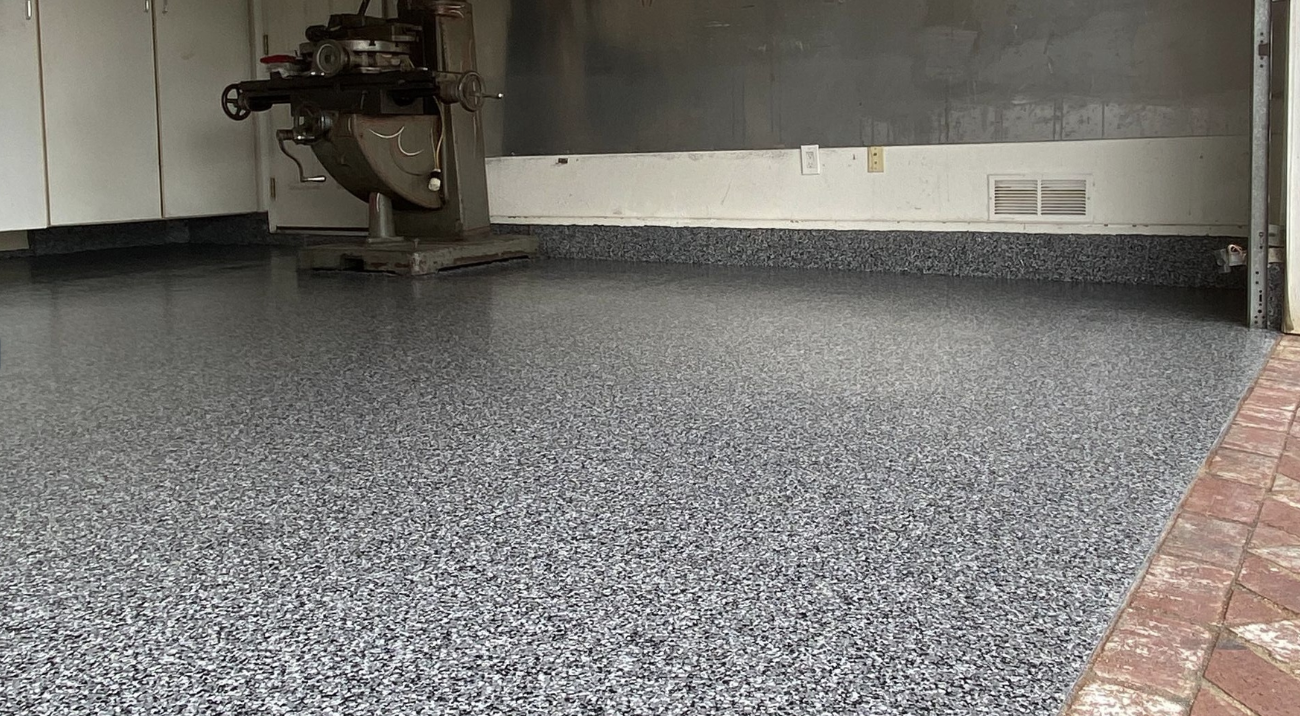
This bold mix of grays, blacks, and whites creates floors that catch the eye and start talks.
- The high contrast helps hide dirt between cleanings.
- Its mix of light and dark works with both light and dark room colors.
Pro Tip: Let this floor be the star by keeping other room elements simpler—it pairs well with solid color walls and furnishings.
Essential Dos and Don’ts for a Flawless Epoxy Floor
| Do This | Don’t Do This |
|---|---|
| Test floor moisture before starting | Apply epoxy on damp or wet concrete |
| Clean the floor thoroughly | Skip proper cleaning and preparation |
| Repair cracks and holes first | Cover damaged areas with epoxy directly |
| Follow exact mixing instructions | Guess amounts or mix too much at once |
| Apply thin, even coats | Put on thick layers to save time |
| Work in the correct temperature range | Apply in very cold or hot conditions |
| Allow full curing time (24+ hours) | Walk on the floor too soon |
| Wait a week before heavy use | Place furniture immediately |
| Use proper safety gear (gloves, masks) | Work without protection |
| Plan your exit route when applying | Paint yourself into a corner |
Conclusion
Picking the right epoxy floor color shapes how your space looks and feels. We’ve shown the many options available and key points to think about during your choice.
Your floor color should fit your needs, room size, lighting, and style. Light colors open up small spaces, while darker tones add warmth to larger areas. Consider how much upkeep you want to do – some colors show dirt more than others.
Take time with the application steps we shared to get the best results. Clean well, check moisture, mix correctly, work in parts, mind the weather, and allow full drying time.
The perfect epoxy color creates a base that ties your space together. What color would work best in your home?

